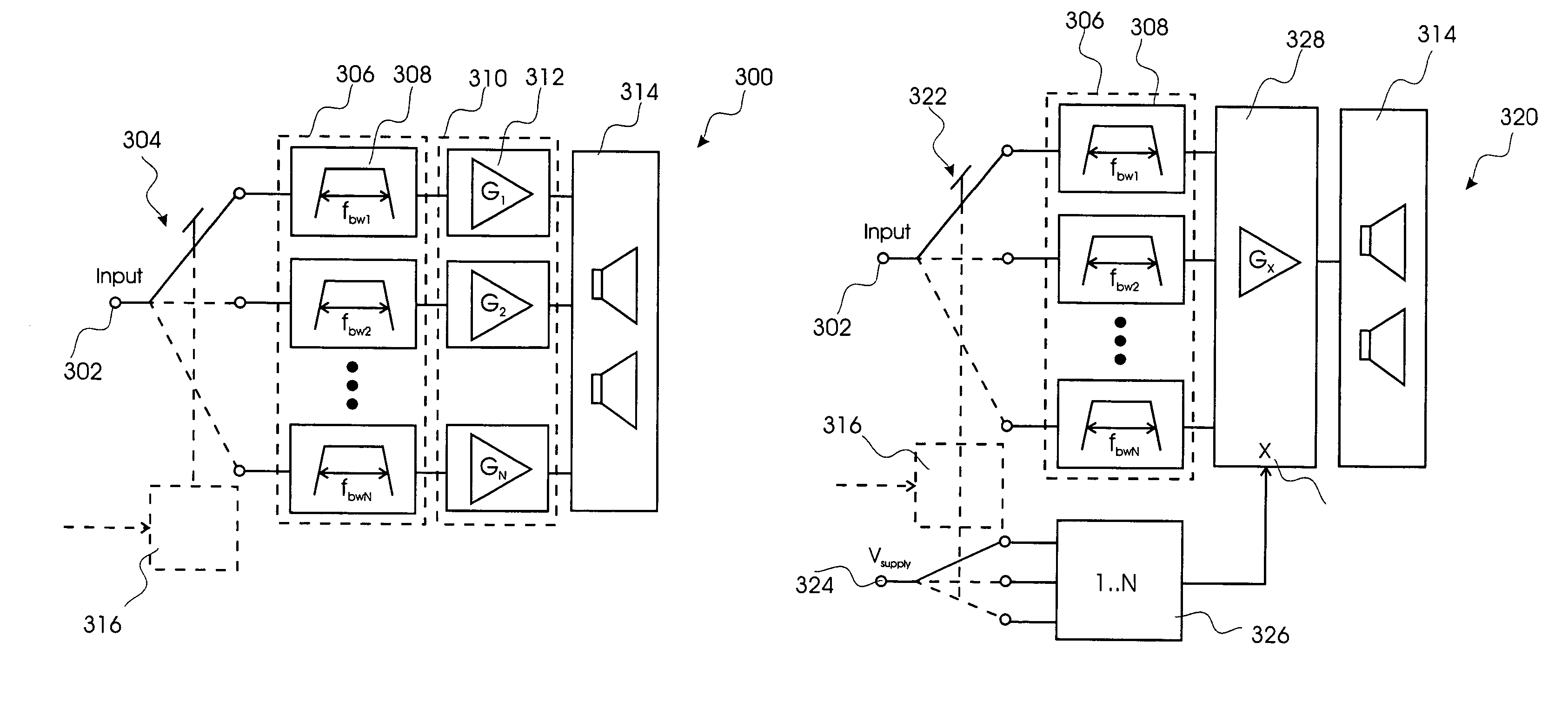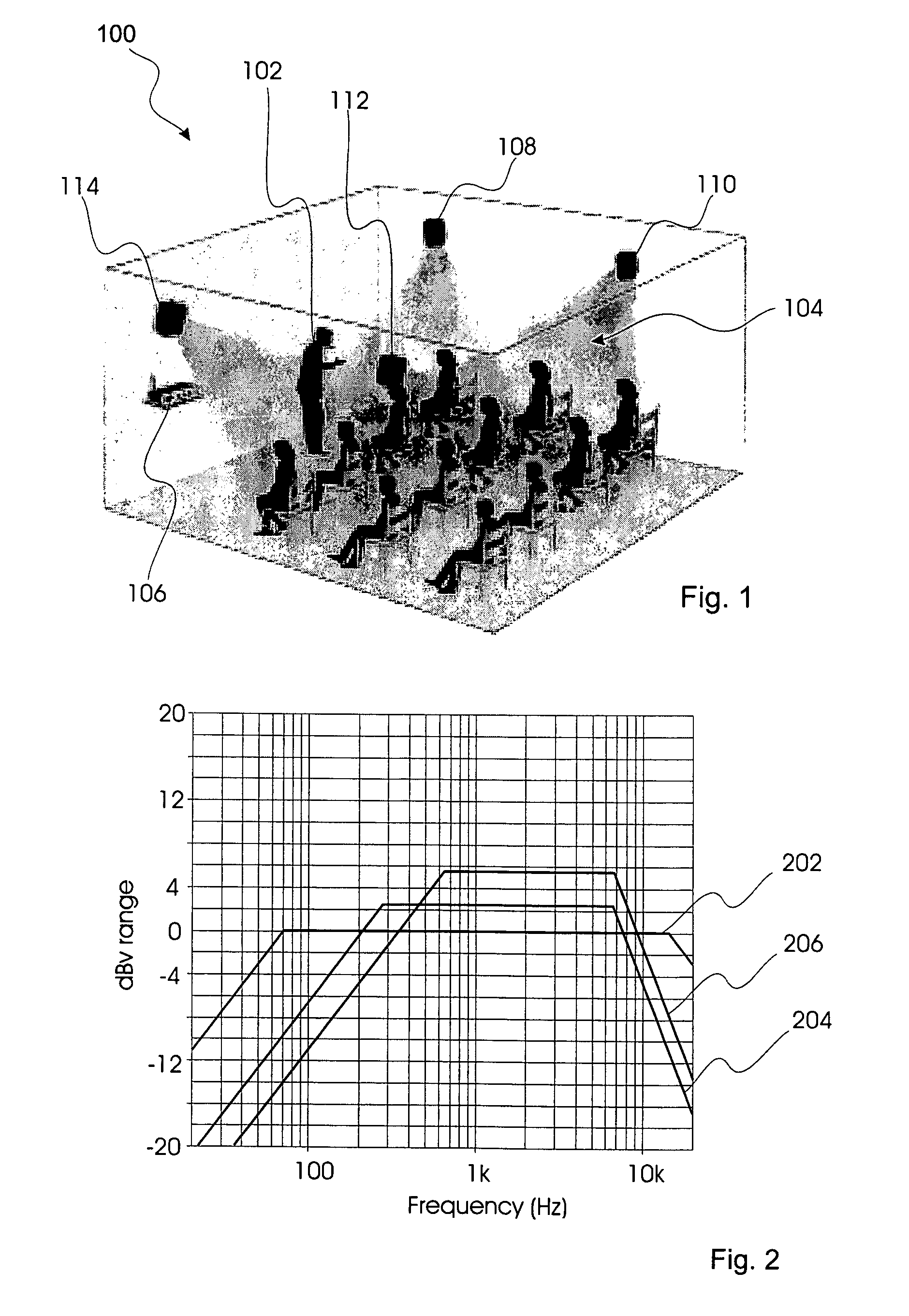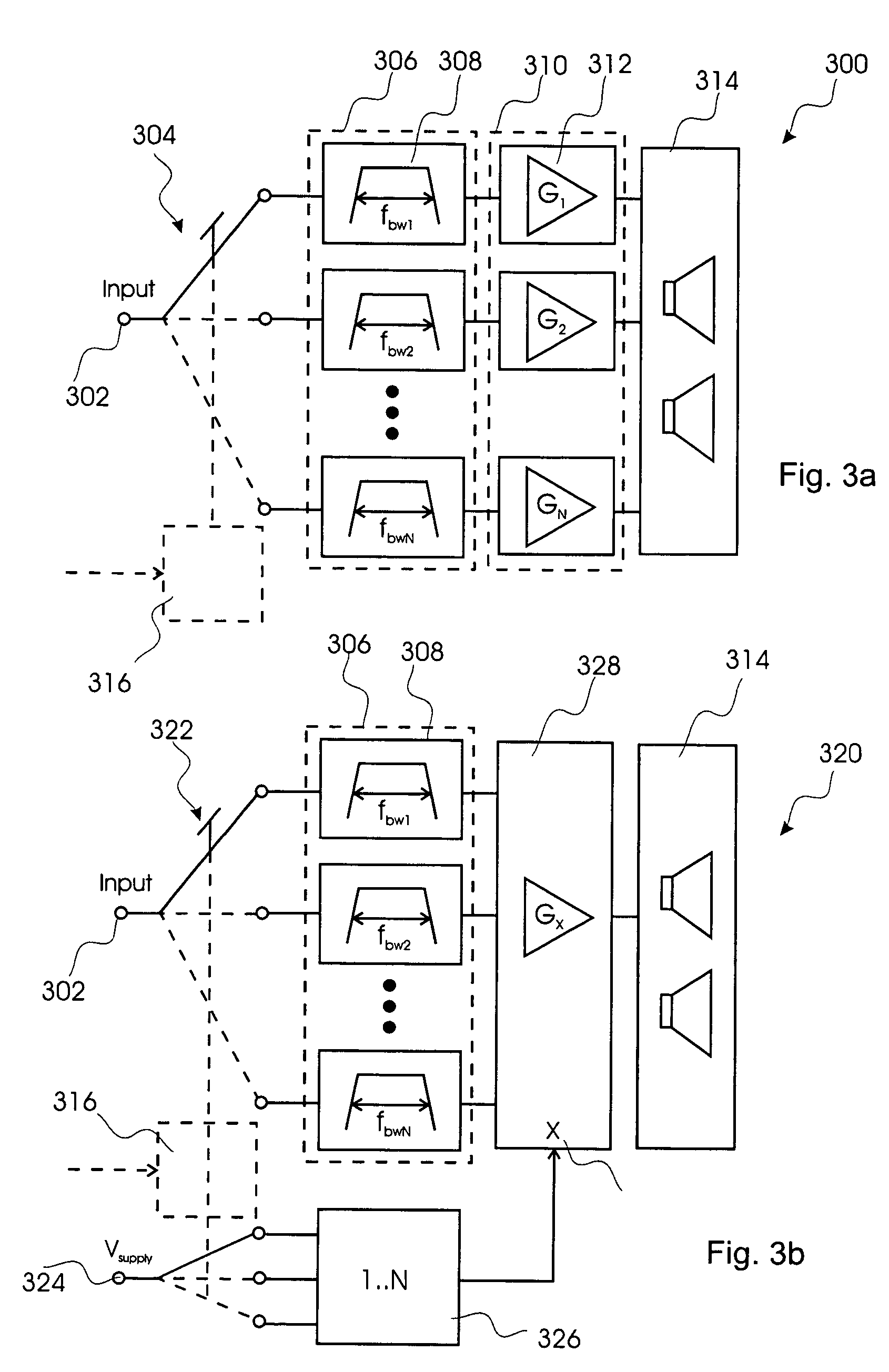Method and system for amplifying auditory sounds
a technology of auditory sounds and amplifiers, applied in the direction of transducer details, electrical transducers, signal processing, etc., can solve the problems of straining the vocal chord of the teacher, not providing amplification of speeches, and increasing the vocal amplitude of the teacher, so as to increase the speech intelligibility, increase the gain, and achieve advantageous control of the amplifier gain
- Summary
- Abstract
- Description
- Claims
- Application Information
AI Technical Summary
Benefits of technology
Problems solved by technology
Method used
Image
Examples
second embodiment
[0029]FIG. 1, shows a classroom designated in entirety by reference numeral 100. In the classroom 100 a teacher 102 speaks to an audience of students 104. The teacher 102 carries a microphone around the neck or attached on a collar of a coat or shirt. The microphone converts the sound from the teacher 102 to an electric auditory signal. The classroom 100 comprises signal processing element receiving the electric auditory signal and performing a filtering and amplification of the auditory signal. In one embodiment of the present invention the signal processing system is implemented a wireless transmitter transmitting the auditory signal to a wireless receiver 106, and in the present invention the signal processing system is implemented in the receiver 106.
[0030]Following filtering and amplification of the auditory signal, which will be described in detail with reference to FIGS. 3a through 3c, the receiver 106 communicates the filtered and amplified auditory signal to a plurality of ...
first embodiment
[0036]FIG. 3a shows the signal processing system according to the present invention designated in entirety by reference numeral 300. The system 300 comprises an input 302 connecting to a microphone worn by a person making a presentation, such as the teacher 102. The microphone converts the sound of the person to an electric signal. The electric signal is communicated from the input 302 to a switching unit 304 enabling switching between a range of filtering and amplification modes of the system 300.
[0037]The system 300 further comprises a filter block 306 comprising a plurality of individual filters, such as filter 308, each having a specific bandwidth. Each filter of the filter block 306 is selected through the switching unit 304 and provides a filtration of the electric signal thereby generating a filtered electric signal. The filtered electric signal is forwarded from the filter block 306 to an amplifier block 310 comprising a plurality of individual amplifiers, such as 312, for e...
PUM
 Login to View More
Login to View More Abstract
Description
Claims
Application Information
 Login to View More
Login to View More - R&D
- Intellectual Property
- Life Sciences
- Materials
- Tech Scout
- Unparalleled Data Quality
- Higher Quality Content
- 60% Fewer Hallucinations
Browse by: Latest US Patents, China's latest patents, Technical Efficacy Thesaurus, Application Domain, Technology Topic, Popular Technical Reports.
© 2025 PatSnap. All rights reserved.Legal|Privacy policy|Modern Slavery Act Transparency Statement|Sitemap|About US| Contact US: help@patsnap.com



